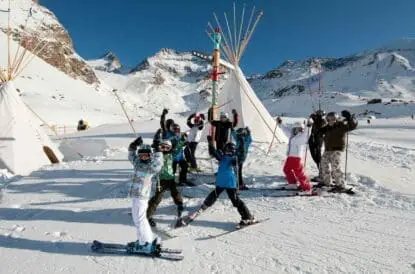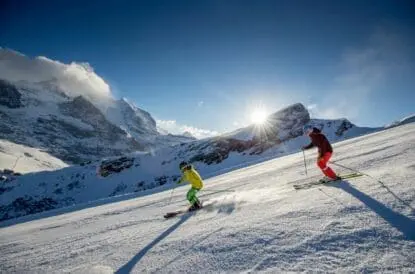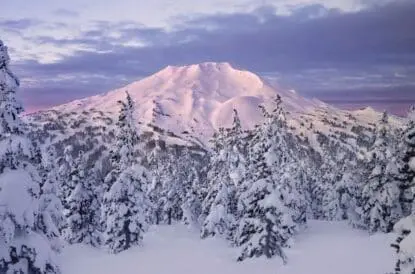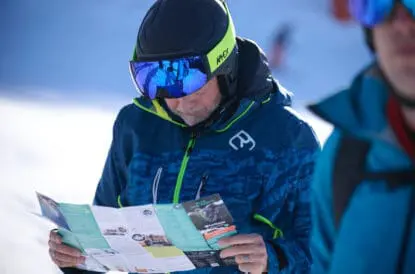There are thousands of resorts all over the world to choose from when planning your first holiday or finding the perfect adventure. Different people will favour different factors too, such as accessibility from a nearby airport, the variety of terrain available, and how picturesque the village is. But what should you consider when choosing a resort to head to this winter? This guide covers some of the obvious and not-so-obvious factors to consider when choosing a ski resort.
Budget
Skiing can be expensive; cost is one of the biggest barriers preventing more people taking up snowsports.
However a combination of choosing the right place to ski and the right time to go can help you reduce the burden on your wallet.
Traditionally, Bulgaria and Andorra have been two destinations that score highly on the budget ski trip awards. Andorra certainly offers plenty of bang for your buck, with recent investments in infrastructure upgrading the entire ski experience whilst costs to the skier remain low. Bulgaria represents some of the cheapest skiing in Europe, but be prepared, the country hasn’t seen the investment in infrastructure, both on snow and off; it doesn’t mean you won’t have a good time, though!
Italy is perhaps the best destination to find value with your ski trip. Almost everything is cheaper in Italy, including day-to-day essentials on your holiday like food and drink. However, the quality can be superb; this is after all the home of pizza, pasta, and really good wine! Some discretion is advised, as resorts in the Dolomites in the northeast of the country, such as Cortina d’Ampezzo and Madonna di Campiglio, can be as well-heeled and equally expensive as their French and Swiss equivalents – this is especially true with the Winter Olympics coming to town in 2026. However, there are plenty of destinations like Sauze d’Oulx, Cervinia and Champoluc that offer brilliant skiing, great food, and comfortable accommodation at a very reasonable rate. Austria can fit into this bracket, too, although generally sits somewhere between France and Italy in terms of value for money.
On the flip side, big French and Swiss resorts tend to be more exclusive; a strong Swiss Franc makes spending in the country unfavourable in recent years, and some French resorts often angle themselves towards a more wealthy clientele, with limited accommodation options for those on a budget. However, value can still be found in many French resorts, particularly those most often used by “locals” or generally not on the radar of British skiers. St Gervais and Vaujany are two good options, both of which tie into bigger ski areas but are not frequented by Brits, nor suffer from the same “big resort” exclusivity that can impact Val d’Isere and Les 2 Alpes, for example.
Planning a trip further afield? Long gone are the days of skiing North America on a budget, unfortunately, with lift tickets pushing $200 a day at peak periods in some of the headline resorts, and hotels and other accommodations monopolised by the resorts they sit in to drive up prices here, too. Your best bet at saving money is a multi-resort pass like Epic or Ikon, which can bring the cost down to a very respectable per-day rate, and with shorter stay versions available, too, you don’t have to throw money away on a season-long pass just to squeeze a few days in whilst in the area. If you are looking for a bargain, look for “locals” resorts, those that have not been hoovered up by Vail or Aspen, and serve almost exclusively the region around them. Mount Washington, BC, not only has the added benefit of being located on the truly stunning Vancouver Island, it also hosts North America’s cheapest skiing.
We are very much in the last days of skiing Japan on a budget. Really good value accommodation can still be found, especially in apartments and self-catered formats, and the huge number of resorts in Japan means there are plenty under-the-radar spots to visit for far less than the bigger destinations. The big hitters, especially Niseko, are undergoing the same consolidation as North American resorts, meaning a flight to luxury and an increase in costs across the board.
Snow Reliability
With climate change having a greater impact on snow each year, snow reliability is quickly becoming the top factor British skiers consider.
Different regions of the Alps can guarantee good conditions at different times. As a rule of thumb, anything with terrain over 2,000m is normally a good bet for snow at all times of the year, including at Christmas and later in the season around Easter. The big questions are around the bookends of the season, when good deals can be found but only because the snow reliability takes a hit (in theory). High resorts in France are almost always a good bet for December and Christmas skiing, including Tignes, Val d’Isere and Val Thorens – there’s a very good reason the Ski Club runs its early season trips, Reps course and Rep refresher courses to these areas in early December. The same can be said of the high resorts of Zermatt, Switzerland, and Solden, Austria, both featuring high terrain giving you the chance to ski here early in the season – there’s a reason Solden traditionally hosts the opening rounds of the FIS Alpine Skiing World Cup as early as October each season!
This does not mean that resorts below this 2,000m mark aren’t snow sure; it just means that it is more risky booking very early and very late season deals. Morzine, one of the lowest resorts in the Alps, has plenty of snow to go around by late December, and offers as fantastic skiing as its higher counterparts.
Of course, one of the added side effects of climate change is this model has become warped and twisted in recent years. The tail end of the season, covering March and April, has seen amazing conditions across the Alps, often better than supposed mid-winter of January and February! This past December (2023) was one of the best France has experienced. And just because it has snowed, doesn’t mean it will continue to do so – most of the Alps descended into spring-like conditions, with double-digit temperatures and slush underfoot, in the middle of January, or were plagued by rain over the past two seasons (2022/23 and 2023/24)! However, many of these problems have been altitude related – the advice to aim high no longer applies to just early and late season skiing. Stick to resorts where a bulk of the skiing takes place at or above 2,000m, and you’ll be fine.
Getting There
Short transfers are ideal for weekend getaways; or travel green and take the train
It goes without saying that some resorts are easier to get to than others, especially if you are planning on a weekend getaway, aren’t a fan of long transfers, or want to mix up the resorts you ski at.
Many Swiss resorts are connected directly to the country’s fast and efficient railway network, offering easy access to the country’s two main airports, Geneva and Zurich. In Austria, the mountainous nature of the country means resorts are never too far away; 11 resorts surround Innsbruck, for example, and are less than one hour from Innsbruck airport. A shuttle bus serves many of them from Innsbruck city centre, too, a configuration that is rarely matched anywhere in the world!
French and Italian resorts can be more difficult. A number of them are close to airports, such as Morzine and La Clusaz to Geneva, Alpe d’Huez to Grenoble, or the Via Lattea resorts to Turin. Others, however, are the end of long, winding valleys, such as Tignes, France, or Livigno, Italy.
And what about driving or getting there by train? The Ski Club has handy guides to help you with both, identifying great destinations to ski at by train or giving helpful tips to help you arrive safely by car at your destination. In short, there are a great number of resorts accessible via Eurostar from London, changing at Lille, Paris, Brussels or Amsterdam along the way. The classics like Tignes and the Three Valleys remain firm favourites, but their are growing incentives to visit a variety of destinations; OBB, the Austrian national railway operator, is in the process of rolling out new sleeper carriages to make the journey from Amsterdam to Innsbruck more comfortable than ever, and the Via Lattea (covering resorts such as Sestriere and Sauze d’Oulx) will give you a discount on your lift pass if arriving by train, including from Paris.
Sustainability
Environmental sustainability is becoming an increasingly important factor in deciding where to go skiing.
Many ski resorts already have a good head start in being environmentally friendly, as they often rely on renewable hydro energy, operate a car-free resort, or are well connected to railway networks.
The Ski Club has highlighted those that go above and beyond this base measure. Using globally recognised certification systems, including the Flocon Vert award (France), B-Corp certification (worldwide), or the National Ski Area Association’s Golden Eagle Awards (USA), you can easily locate resorts that are considered truly environmentally sustainable.
We’ve also worked with our partner SnowCarbon to highlight resorts that are easy to get to by train; flying contributes more greenhouse gas emissions per day than any other aspect of your skiing holiday, so knowing where and how to go skiing by train can make a huge difference to your snowsports carbon footprint.
The Resort Village
Chocolate box idyll or modern party town?
The look, feel, and happenings in resort can make the difference between a good ski holiday and a great ski holiday. There is a stark divide between the chocolate box, car-free villages of Switzerland and Austria, and the modern, purpose-built resorts of France, with the former perfect for a postcard home or an Instagram hashtag, that latter … not so much.
But, as with all things, beauty is still in the eye of the beholder. What modern and bigger resorts may lack in style, they certainly make up for in substance, with some of France’s best skiing found in modernist dreams from the 1950s and 1960s, such as Tignes and Les Arcs. And the best resorts for dancing the night away on tables at après ski bars are the bigger, bustling resorts of Austria and France; Ischgl, St Anton and Solden immediately spring to the mind of many skiers!
If you are looking for that traditional alpine experience, there is still plenty to go around. The Swiss resorts of the Jungfrau region, including Wengen, Grindelwald and Murren, are car-free, laid back villages that embody the very history of skiing. Elsewhere, Bad Hofgastein, Austria, is a peaceful spa town home to some truly excellent on-piste skiing, and corners of Sauze d’Oulx date from the 1600s, featuring cellar wine bars that used to be medieval cattle sheds!
Learning to Ski
Whilst every resort features ski schools to help you learn, how to book and compatibility between schools may vary.
In all countries, instruction is governed by a national body, ensuring the same curriculum is taught at every level and in every resort. Some countries such as France offer a truly centralised ski school with a central booking system; others, you will need to find the ski school on a resort-by-resort basis. There is no “right” or “wrong” way to learn how to ski, with different countries employing different curricula, so don’t be surprised if the experience differs from one ski holiday to the next.
In some resorts, there will also be a number of “private” ski schools, i.e. not governed by the central governing body (although all instructors will be fully qualified). This is most common in big resorts in France and some in Austria and Switzerland (especially those with a strong British clientele such as Verbier or St Anton). They also provide guiding services if you want to make the most of some of the amazing off piste in these resorts.
You will also see a rise in aggregator services, such as Maison Sport or SkiBro, offering access to independent instructors and guides.
Summary
When planning where to go, consider the following:
- Bulgaria, Andorra, and Italy often offer the best value destinations
- Switzerland provides picture-postcard alpine villages
- Austria and France host many vibrant resorts
- Look out for resorts that have bona fide sustainable credentials
- All resorts offer ski schools, but look out for independent schools & instructors
- Don’t forget to consider transfer times; France and Austria can have the quickest





